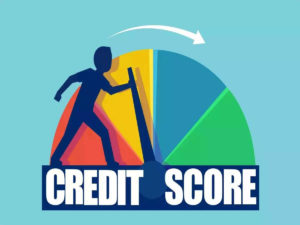Identity theft is becoming increasingly common, posing a substantial risk to personal finances. Cybercriminals employ various methods to get sensitive information, such as social security numbers, credit card numbers, and bank account information. Individuals who lack effective identity theft protection are vulnerable to scams that result in financial loss and unauthorized use of personal data.
Albert’s identity protection guide may help avoid financial hazards such as identity theft. Understanding fraud protection measures is critical for protecting bank accounts, investment accounts, and other financial assets.

Identity Theft: What Happens
Identity thieves employ a variety of techniques to steal information, including:
1. Phishing Scams – Fraudulent emails, messages, or phone calls that fool victims into revealing account numbers and passwords.
2. Data Security Breach – Hackers break into organizations, revealing consumer credit cards and personal information.
3. Skimming Devices – Card skimmers, put on ATMs and payment terminals, steal debit and credit card details.
4. Social Engineering – Scammers use social engineering to trick people into disclosing critical information.
5. Dark Web Sales – Stolen identities are being sold on the dark web for fraudulent use.
Consequences of Identity Theft
Identity theft can result in:
- Funds from checking and savings accounts have been stolen.
- Credit and debit card transactions are fraudulent.
- Unauthorised action has resulted in worse credit scores.
- Criminals file returns under your name, which is considered tax fraud.
- A tarnished financial reputation, making it harder to obtain personal loans.
Defending Yourself From Identity Theft
Follow the actions below to be secure online and safeguard your finances:
1. Apply Strong Online Security Practices
- Allow two-factor authentication (2FA) for online accounts.
- Regularly update the operating system and security software.
- Avoid clicking on suspicious links in emails or text messages.
2. Keep Track of Your Credit Reports
- Check your credit reports from each of the three credit bureaus: Experian, Equifax, and TransUnion.
- AnnualCreditReport offers a free copy of your credit report each year.
- Sign up for credit monitoring services that alert you to unusual behavior.
3. Secure Your Bank Account and Cards
- Bank statements should be reviewed regularly for any unlawful transactions.
- Use notifications to keep track of account activities in real-time.
- Notify your bank immediately if you see any questionable behavior.
4. Utilize Identity Monitoring Services
- LifeLock Ultimate and other similar services aid in the detection of fraudulent activities.
- Social media monitoring can help to keep fraudsters from collecting personal information.
5. How to Use Mobile Banking Apps Safely
- Banking apps may only be downloaded from certified app stores.
- Never use public Wi-Fi to do online banking transactions.
- After each session, log out of your mobile banking application.
What are the Warning Signs of Identity Theft?
Recognizing the warning symptoms of identity theft might help you avoid serious financial consequences. Be aware of:
- Unauthorized debit card withdrawals or illicit usage.
- Receiving calls from fraudsters posing as bank or government organization representatives.
- Credit scores decline unexpectedly due to the opening of unfamiliar accounts.
- Failure to receive invoices or financial statements, suggesting a potential mail theft.
- Credit applications were denied despite an excellent credit background.
If you see any warning signals, contact your bank, credit card provider, or the Federal Trade Commission (FTC) immediately.
Identity Theft Prevention: What to Do If You’re a Victim
If you suspect identity theft, follow these guidelines:
- Notify your bank and credit card company of the scam right away.
- Contact the FTC (Federal Trade Commission) at IdentityTheft.gov.
- Place a fraud notice with one bureau, which will notify all three.
- To prevent the opening of new accounts, freeze your credit files.
- Change the password for all of your online accounts.
Common Identity Theft Scams
| Scam Type | How It Works | How to Protect Yourself |
| Phishing Emails | Fake emails trick victims into giving personal data. | Avoid clicking on unknown links. |
| Phone Scams | Scammers pose as banks or government agencies. | Never share information over the phone unless you initiate the call. |
| Mail Theft | Criminals steal mail to gain account access. | Use a locked mailbox or switch to paperless bank statements. |
| Fake Websites | Fraudulent sites steal login credentials. | Verify URLs before entering login details. |
How Credit Bureaus Aid in Identity Theft Prevention
Identity theft prevention relies heavily on the three credit bureaus (Experian, Equifax, and TransUnion). They keep track of credit files, identify fraudulent account activity, and prevent thieves from creating new accounts in your name.

How to Use Credit Bureaus for Protection
- Request a free credit report from each bureau once a year.
- Set up fraud alerts to get notified of questionable activity.
- Freeze your credit to prevent illegal credit requests.
- You can prevent identity theft and save money by reviewing your credit reports regularly and setting up alerts.
Final Thoughts
Identity theft is a rising concern, but fraud prevention measures can help secure your money and personal information. Employing identity protection, safeguarding internet accounts, and analyzing credit reports can lower your chances of becoming a victim.
This guide contains extra information on effective household management. If you want to better your finances, check into methods to avoid debt and manage your money effectively with these financial tactics.




Be First to Comment